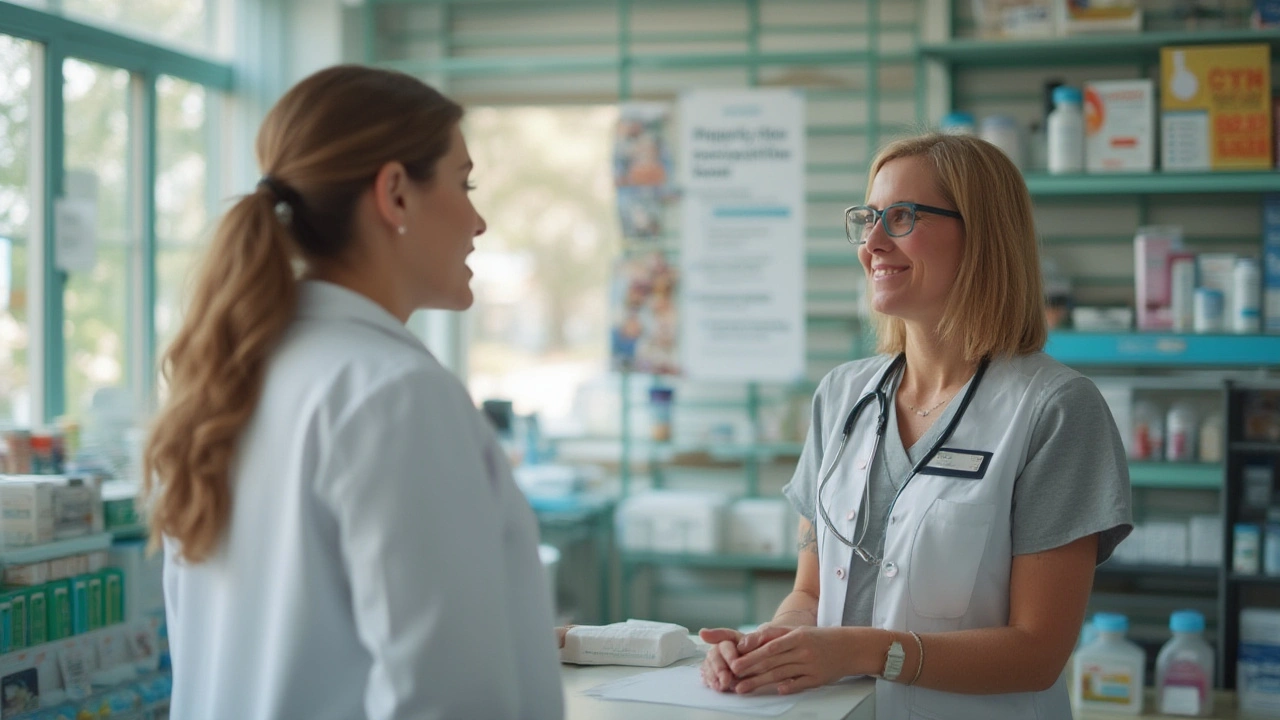Imagine you're fighting off an infection, relying on trusty penicillin-class antibiotics—then, out of nowhere, your stomach feels like a washing machine, a weird rash creeps up, or you just can’t shake that relentless urge to itch. It’s frustrating, and you’re not alone. Across the world, millions deal with the same surprises when taking penicillin drugs. Side effects can be annoying, sometimes scary, but knowing how to manage them can make life a whole lot easier while your body recovers from infection. Medicine shouldn’t leave you feeling miserable—so, let’s talk about making it work better for you.
Why Do Penicillin Drugs Cause These Side Effects?
Penicillin-class antibiotics, like ampicillin, amoxicillin, and penicillin V, are real cornerstones of the medical world. Doctors prescribe them for everything from throat infections to skin wounds. They target pesky bacteria with powerful precision, but sometimes your body doesn’t love the collateral damage. The most common complaints? Gastrointestinal upsets (think: nausea, cramps, diarrhea), skin rashes, mild fevers, and, very rarely, more severe allergic reactions.
So, why the drama? It’s because antibiotics don’t just stop at bad bacteria. They sometimes wipe out friendly bacteria in your gut, tipping the balance and priming your stomach for chaos. As for rashes and allergies, your immune system can get a bit theatrical, recognizing parts of a penicillin drug as foreign invaders. It mounts a defense, which shows up as hives, redness, or itching. The numbers back it up: nearly 10% of people report some sort of penicillin allergy, but most aren’t true allergies—just temporary, mild side effects.
One thing to know: the difference between a true, dangerous allergy and a bothersome side effect is huge. Allergic reactions can include swelling of the face or tongue, trouble breathing, or severe hives. If that happens—don't wait; it's time for emergency help. But in most cases, we're dealing with milder types of rashes or tummy troubles.
Some drugs interact with penicillin or make you more prone to side effects—birth control pills, methotrexate (given for arthritis), and gout medicines can be on that list. Keep your doctor in the loop about everything you take, even vitamins. It's small talk that matters.
Handling GI Upset: Stomach, Gas, and Diarrhea Troubles
First up: GI upset. You pop your antibiotic, and soon after—grumbling belly, gas, maybe an embarrassing dash to the bathroom. Antibiotic-associated diarrhea hits 5-25% of folks, depending on the study, and it's top of the complaint list. How do you cope?
Start simple: never take your antibiotic on an empty stomach unless your doctor says it’s a must. Mixing pills with food cushions your stomach and can dilute the hit of nausea or cramps. Not all penicillins are the same in this respect—some (like ampicillin) should be taken before meals, while others are gentler with food on board. Check the label or ask your pharmacist.
Hydration is your best friend. Dehydration only magnifies cramps and diarrhea, so keep a bottle of water handy and sip regularly. Electrolytes (think sports drinks or rehydration powders) help, especially if you’re visiting the bathroom more than usual. Steer clear of caffeine and alcohol—they’re tough on your stomach and can make the problem worse.
Probiotics might be your secret weapon. There’s solid evidence that certain strains, like Lactobacillus rhamnosus GG or Saccharomyces boulardii, reduce diarrhea linked to antibiotics. Yogurt is a popular choice—with "live and active cultures" on the label. Just time it a few hours away from your antibiotic dose so both do their job.
If you’re on a longer course or your diarrhea is severe, it’s a good idea to call your doctor. In rare cases, antibiotics can trigger a nasty infection from a bug called Clostridioides difficile (C. diff). Look for watery diarrhea that won’t stop, fever, or blood in your stool.
Want nitty-gritty details about specific drugs and how their side effects stack up? Check out this deep dive into the side effects of Ampicillin—it’s packed with practical, no-nonsense info.

How to Soothe and Interpret Rashes
Nothing puts the brakes on recovery like finding a rash where your skin was clear just yesterday. Penicillin drugs, especially in kids, can cause pinkish, blotchy rashes or hives. Most are harmless and fade after you stop the drug. The trick is sorting out the mild from the dangerous.
So, what does a typical penicillin rash look like? If it’s flat or slightly raised red spots, not painful or blistered, and not spreading quickly, you’re probably dealing with a simple "drug rash." It can itch, but antihistamines (like cetirizine or loratadine) help. Cool compresses and moisturizers calm skin. Skip harsh soaps—gentle, fragrance-free cleansers keep irritation down.
But ring the alarm if you see swelling of the lips, mouth, or face, difficulty breathing, or a rash with blisters (like a burn). This can be a sign of a severe allergic reaction or Stevens-Johnson syndrome, both medical emergencies. Get help fast. It’s rare—less than 1 in 10,000 get serious skin issues from penicillin—but worth knowing.
For run-of-the-mill itching and rash, basic self-care helps a lot:
- Keep cool—heat makes itching worse. Opt for loose, cotton clothes.
- Apply over-the-counter hydrocortisone cream for relentless itch—but not on broken skin.
- Stick with tepid baths, maybe add colloidal oatmeal for its calming effect.
- If you scratch, keep nails short to avoid skin damage or infection.
Many rashes resolve within a week of stopping the medication. Still worried? Snap a pic to show your doctor—seeing the pattern helps them decide what’s next. Sometimes, what looks like a “penicillin rash” can be from the infection itself (like those odd spots from mono in teens taking ampicillin).
Other Common Reactions and When to Call for Help
Beyond stomach and skin woes, penicillin-class drugs sometimes bring less-common guests: headaches, joint aches, mild fevers, or a weird "metallic" taste in the mouth. Most fade with time or adjust with simple strategies. Try a mild analgesic for headaches or joint aches, but check with your provider before mixing extra meds.
Sometimes, side effects can get tricky. Vaginal irritation or yeast infections pop up in women—friendly bacteria in those areas get hit by antibiotics too. If you’re dealing with itching, discharge, or discomfort, over-the-counter yeast infection treatments help, but mention it to your doc if symptoms drag on. Some patients develop "thrush" (white patches in the mouth) from Candida overgrowth. Antifungal rinses or lozenges can clear that up.
Watch out for unusual bruising, bleeding, or yellowing of skin or eyes—these are rare but can mean your liver or blood cells are getting affected. If you see these, get checked out promptly.
Let’s put all this into context with a look at some side effect frequencies:
| Side Effect | Commonality (%) |
|---|---|
| GI Upset (Nausea, Diarrhea) | 5-25% |
| Rash (Non-allergic) | 2-7% |
| True Allergic Reactions | 0.05-0.1% |
| Severe Allergic Reactions (Anaphylaxis) | 0.004-0.015% |
You probably noticed how rare the scary stuff is. But don’t take chances—if in doubt, reach out to your doctor, local pharmacist, or a trusted health info source.
If you do have to stop your medication early due to side effects, check with your doctor about alternatives. Stopping an antibiotic mid-course without a plan can mean your infection fights back—and sometimes gets tougher the second round.
Using a calendar or phone reminder helps keep doses on track, especially when you’re tempted to skip after feeling lousy. Every pill counts when fighting infection.
One final thing: if you ever get a true penicillin allergy, ask for it to be added to your records everywhere you get care. Carry a medical alert bracelet if your reactions were serious. It’s rare, but that info can be life-saving.
If you’re on these drugs, just remember: you’ve got strategies to keep those side effects in check and get through the course as comfortably as possible. Your doctor and pharmacist have seen it all—don’t hesitate to ask questions, snap pictures, or track your symptoms for peace of mind. Knowledge is your best defense against side effect surprises.


Jonah Thunderbolt
July 23, 2025 AT 04:02Rebecca Price
July 25, 2025 AT 00:37shawn monroe
July 26, 2025 AT 19:03marie HUREL
July 28, 2025 AT 11:33Leo Adi
July 29, 2025 AT 18:48Melania Rubio Moreno
July 31, 2025 AT 15:34Gaurav Sharma
August 1, 2025 AT 09:36Shubham Semwal
August 2, 2025 AT 13:27Sam HardcastleJIV
August 3, 2025 AT 23:28Mira Adam
August 4, 2025 AT 11:05Miriam Lohrum
August 5, 2025 AT 05:27archana das
August 6, 2025 AT 09:55Emma Dovener
August 6, 2025 AT 17:18Sue Haskett
August 7, 2025 AT 19:03Jauregui Goudy
August 9, 2025 AT 05:50